Status Update of MeBeSafe field trials
live from the netherlands
MeBeSafe field trials are well under way. The nudges and measures are being tested in real-life situations and a lot of data is being gathered. Are they effective and how many lives can they in-fact save? The team got together for a thorough status update at the 5th General Assembly hosted by TNO in Helmond, the Netherlands.
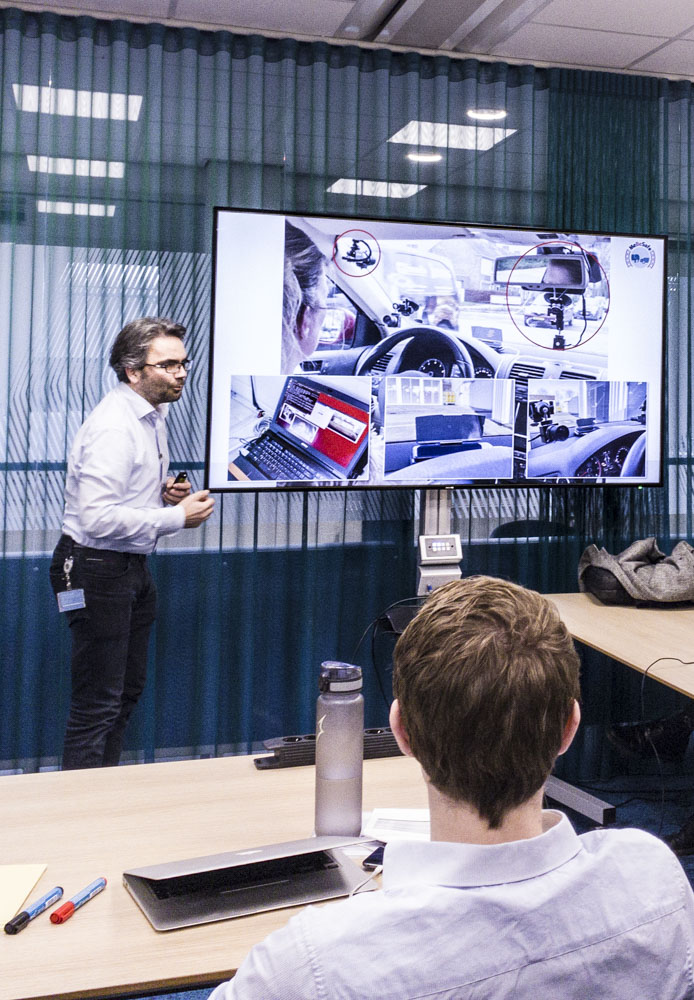
First up from the team was Olaf Op den Camp, safety researcher at TNO, who shared the latest news of the In-Vehicle Nudge, which aims to increase attention of car drivers approaching bike intersection. The user-testing had fared well, and they are now in the middle of analysing the drivers’ gaze direction with the help of Cygnify. Moreover, they are talking with FCA in Italy about the delivery of a car in which TNO will implement the Cygnify cyclist prediction model. At the time of the meeting, when Covid-19 had just begun its tour of Europe, he reassured that the car would come alone.
Olaf shared further news of the Cyclist Nudge in the Netherlands, which aims to have cyclists who are approaching intersections become more aware of the surroundings. They have received data on the trajectories of cyclists passing the nudge and are now planning how to do the analysis together with SVOW. These outcomes are intended to be compared with the Cyclist Nudge in Sweden, as their designs are the same. The possible differences may provide valuable insight as the implementations are made in different scenarios.
Similarly, human factors researcher Pontus Wallgren from Chalmers University of Technology shared news of the Cyclist Nudge in Sweden. It is not used for bike-bike intersections, but instead implemented to reduce the speed of cyclists approaching dangerous intersections with cars. The quantitative data of the study is currently being analysed to make sense of the huge amount of collected datapoints. Variable factors such as nearby cars, weather and cyclist flow are taken into account. Once a data model for the analysis is created, data from an upcoming second location will supposedly be a breeze to analyse.
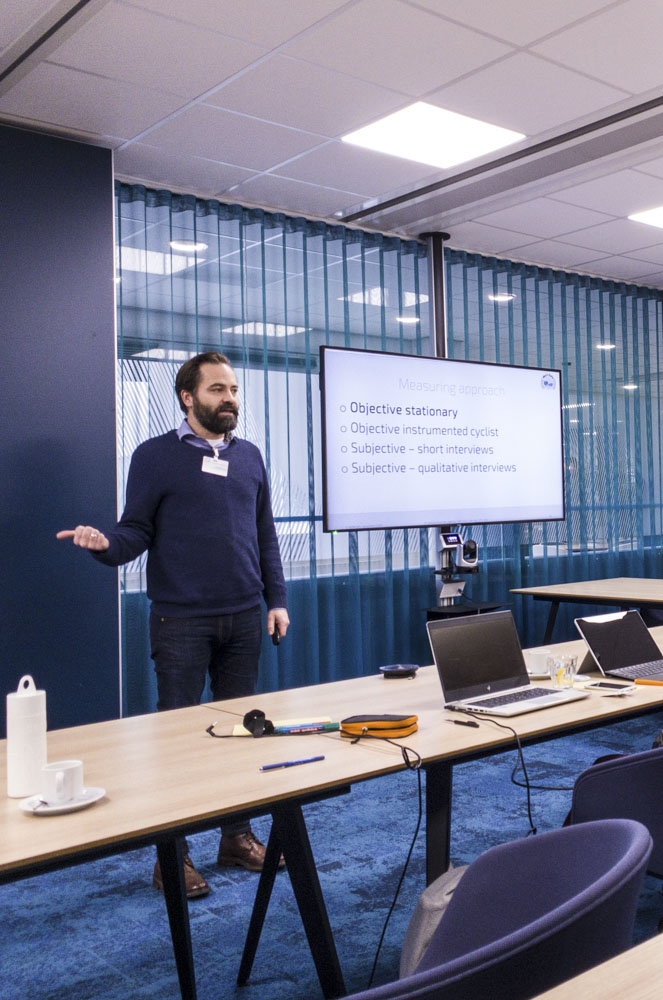
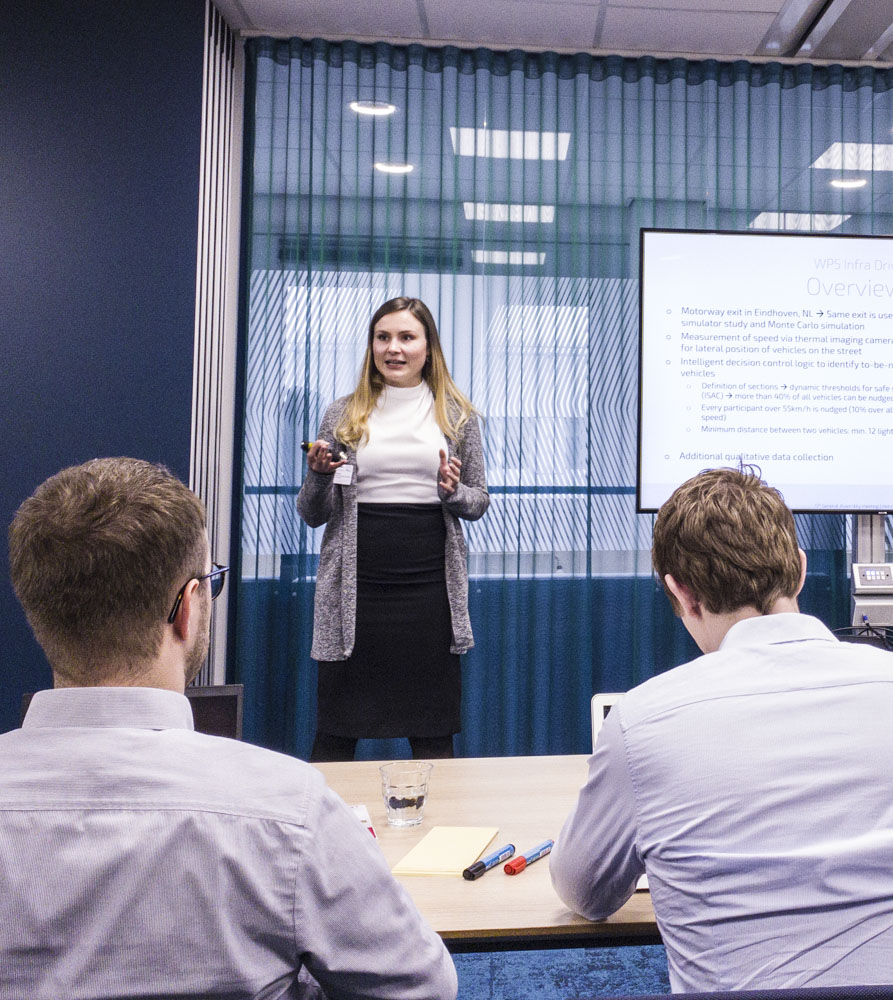
Anna-Lena Köhler, specialist in driver behaviour at ika at RWTH Aachen gave an update about the field test of the InfraDriver Nudge. When necessary, the nudge aims to have car-drivers adapt a suitable speed and trajectory. The quantitative part of the field test is based on several thousands of cars passing by the installed nudge at a sharp-curved highway-exit in Eindhoven, the Netherlands. The team has completed testing different configurations of lights and movement patterns and are continuing to test more configurations. The data is now being analyzed to determine which configurations are the most effective.
Saskia de Craen, senior researcher at Shell, expressed her delight in having the latest version of their coaching app DriveMate up and running. This measure is not a nudge, but a basis for coaching. It provides truck drivers a private insight into their personal driving style and occasionally suggests meeting a colleague for a peer-to-peer coaching session. The app is currently being used by several selected drivers and are about to be introduced to more drivers in Norway and the United Kingdom.
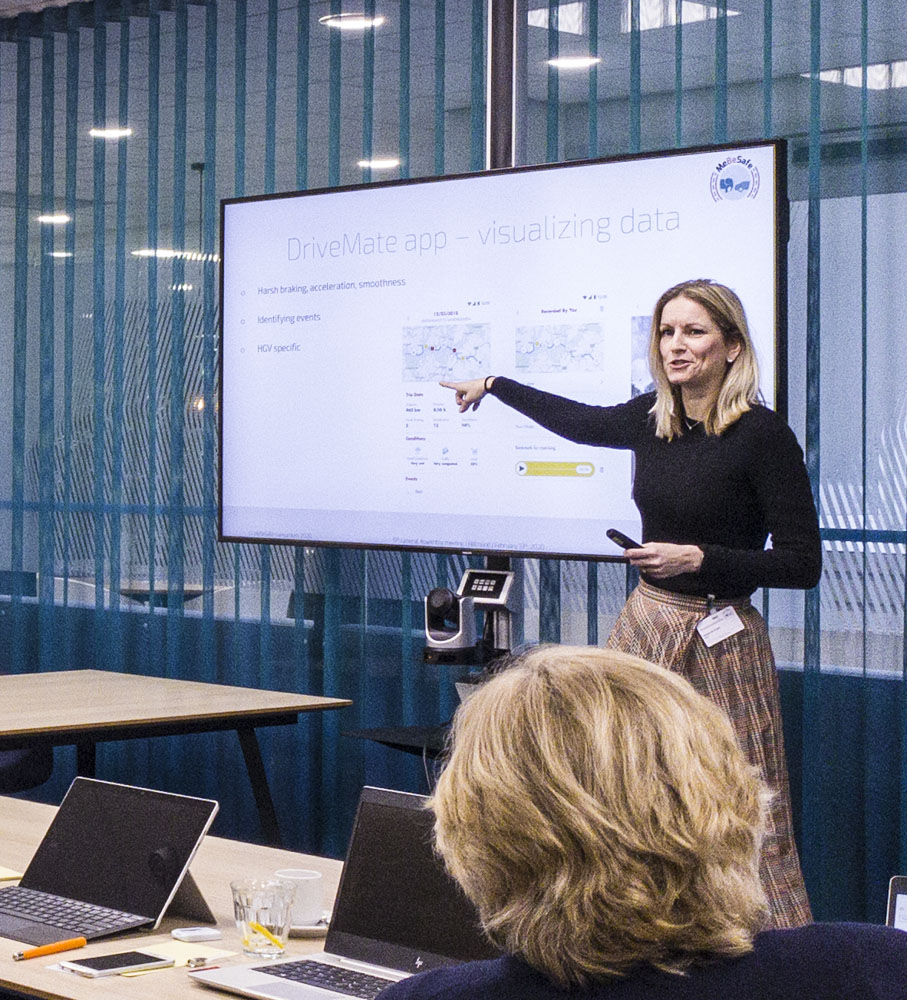

Pär Gustavsson, active safety analyst at Volvo Cars, reported on their measure which aims to encourage drowsy drivers to take a break by giving them an incentive to do so. User-testing is currently well underway. The present iteration is assessing the effectiveness of giving away vouchers eligible at a variety of shops, such as furniture or clothing stores, if the driver agrees to take a break when they are found to be drowsy.
Furthermore, Pär shared some new visuals of the current design of the adaptive cruise control (ACC) nudge, which aims to increase the use of ACC among car drivers. The design is soft to the eye and resembles circles moving around in an unorderly fashion. As the ACC-use increase, so will too the order among the circles. They will eventually slow down into a halt and form an orderly shape – appealing to our attraction to beautiful things. User-testing is currently running and will lead to insights on how to polish the nudge design towards increased effectiveness.
But the measures themselves are not the entirety of the project. There is also the safety impact analysis, which builds upon the data from all of the MeBeSafe measures. The result will be an estimate of how many lives the measures can save if they were implemented across Europe. Johann Ziegler from VUFO spoke of the progress they had made so far. Literature reviews are ongoing, and they are now discussing which European databases and statistics they will use to compare and extrapolate data from. It will result in the so-called transfer function which will be used to understand the impact on traffic related accidents.
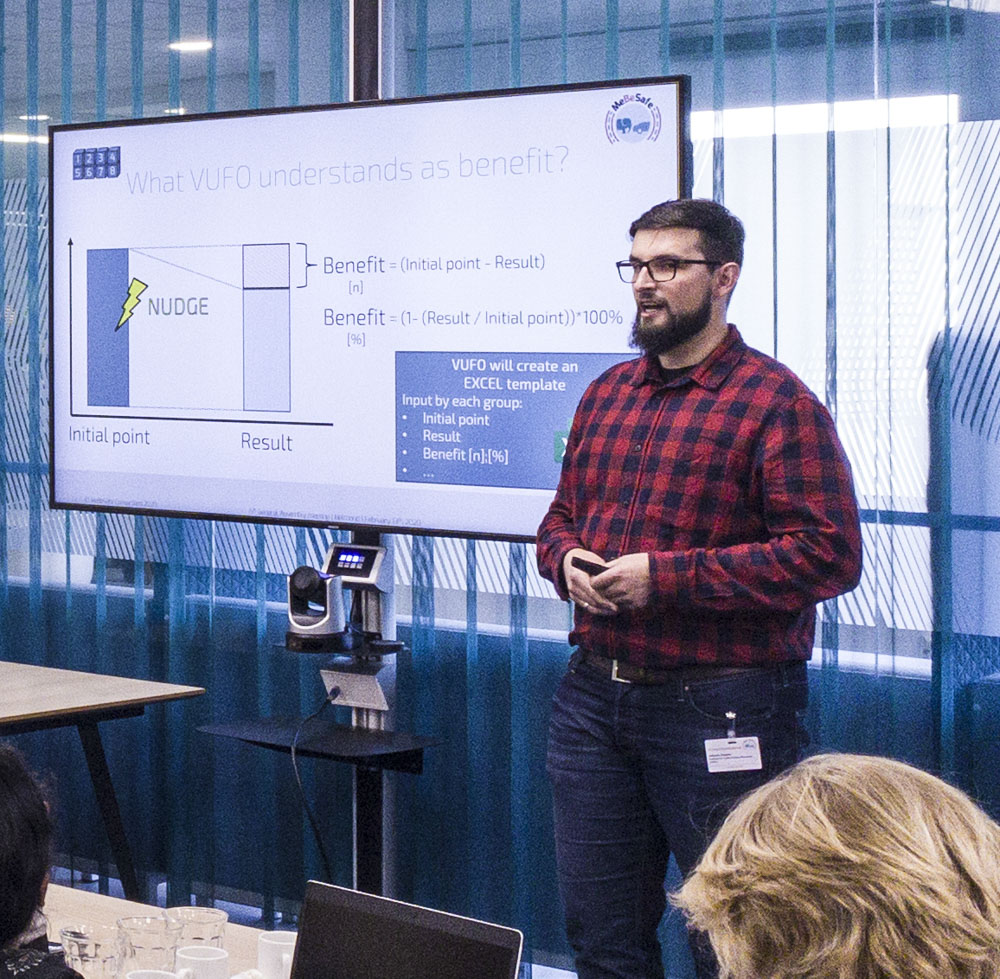
In the end, this will lead to the verdict of the MeBeSafe project. Elaborate nudges and sturdy apps are nothing worth if they cannot make the world a little bit better. And hopefully a great number of saved lives will stand as a legacy of the project.
